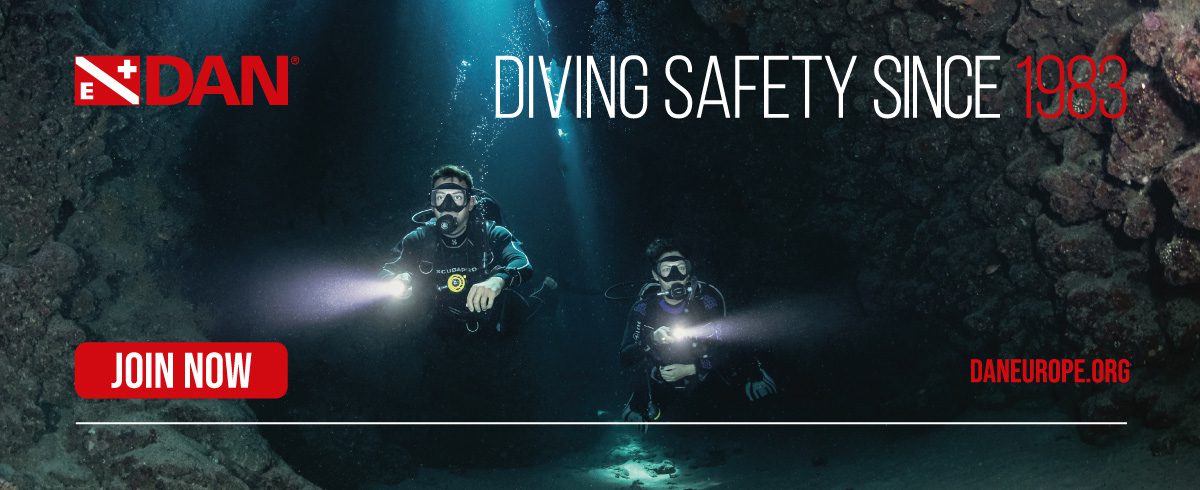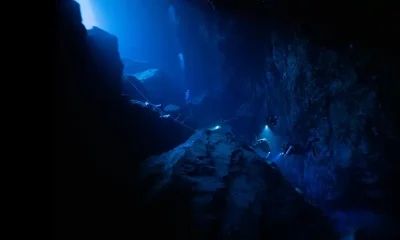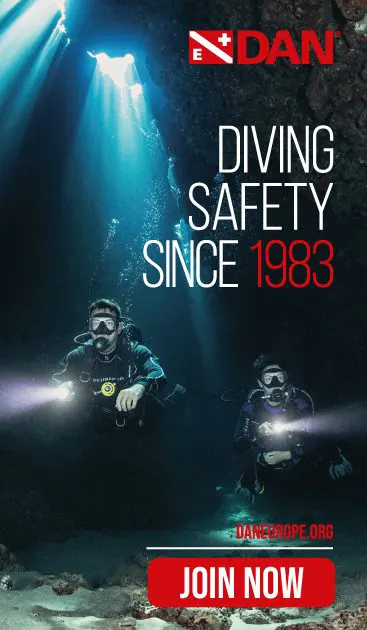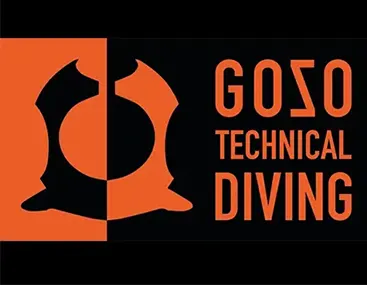Cave
A Perspective on Teaching Cave CCR
Veteran Irish cave and CCR instructor cum sports psychologist Matt Jevon explains how he teaches divers to become competent underground rebreather divers who “err safely” and thus are likely to return home at the end of the dive.
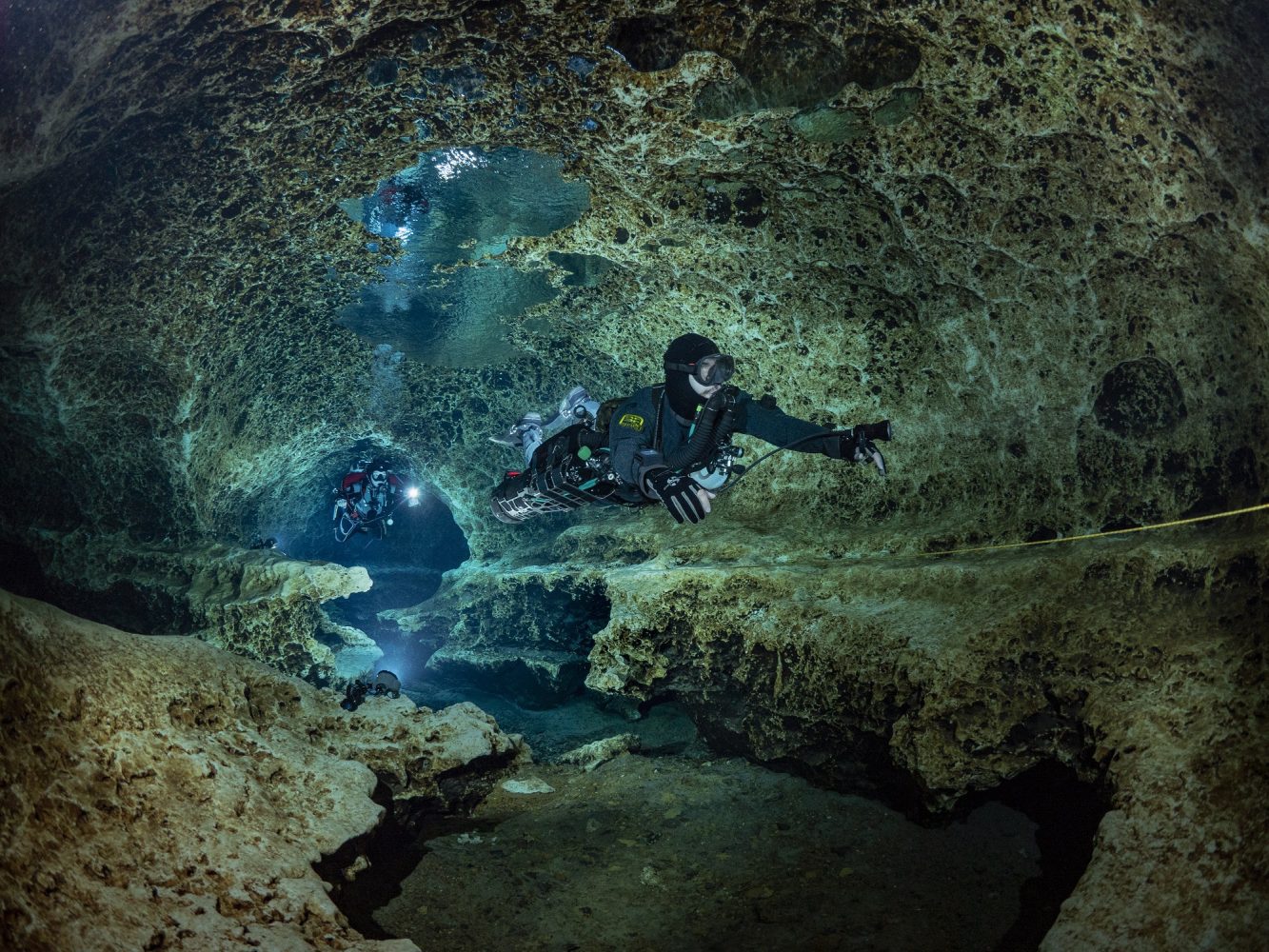
by Matt Jevon
Header image courtesy of Marissa Eckert
“To err is human” Alexander Pope
In his “Essay on Criticism,” Alexander Pope wrote “To err is human, to forgive divine.” However, if you are not prepared to err safely in cave or rebreather diving, you will come face to face with your preferred divine being, begging for forgiveness.
Stratis Kas’s book, Close Calls, a compilation of stories from a roll call of “who’s who” in diving, attests to the fact that the very best of us can and do make mistakes, or err. That they are still here to share these lessons with us affirms the huge amount of training, preparation, and experience required—and, as many will admit, no small amount of luck.
Gareth Lock, author of Under Pressure, is fond of the phrase “fail safely,” and with good cause. As he puts it, and I paraphrase; the human in the machine is at the heart of likely outcomes. In my own experience as a psychologist with expertise in human performance, the best systems, processes, and technologies are often outwitted by an unwitting fool or an arrogant wise man.

Today there is a surge of divers wishing to become cave divers, perhaps because it is perceived by some as the pinnacle of diving—in skill and status—or perhaps because it is seen as more accessible. Certainly, social media has given access to the incredible and beautiful environments that were once the playground of a select few. Divers are discovering that cave and modern diving practices, equipment, and training are making it a much safer environment until they start exploring virgin caves. Closed circuit rebreathers (CCR) are now mainstream and in wide use by many divers. In cave and deep dives, I would say they have become the primary tool; the limitations of open circuit scuba are seen as making it inappropriate for most “big” dives.
By the time a diver reaches their CCR cave course, they will, or should be, a knowledgeable, skillful, and competent diver on a CCR. Perhaps the odd one will find a shortcut, but it is the exception rather than the rule. In addition, the majority will already have some open circuit cave training, at least to intro level if not to full cave. The pathway from zero to hero in the cave is much longer and more difficult to shortcut than, say, open water to instructor status. Starting cave diving on CCR from cavern to full cave is, and should be, a much longer route.
[Ed.note: There are arguments against allowing a student to pursue any form of diving before gaining open circuit experience. Some argue that one should first become competent on open circuit in the relevant environment and THEN train in that environment on RB/CCR. This argument asserts that RB failures will find a diver on open circuit, requiring them to be proficient on this equipment in the relevant environment. These factors may be progressively more relevant with more complex environments.]
So, the CCR cave instructor is not dealing with an inexperienced CCR diver; nor, if they are as careful in their acceptance of students as most are, will they be dealing with an adrenaline seeking-junkie. See “Why We Cave Dive” (video) for reasons why some divers seek out the karst realm, as well as examples of divers we hope to encourage into the sport and those we prefer to avoid it.

The job of a cave CCR instructor is not to prevent all errors or mistakes. It would be both arrogant and foolish to believe that instructors can overcome human nature and the situational factors found in closed circuit cave diving. The instructor’s role is to lessen the frequency and severity and to mitigate the consequences of those errors as, and when, they occur. The instructor must do this in the course, ideally exposing students to likely errors or challenges in controlled conditions and embedding appropriate solutions. Students should acquire appropriate and controlled emotional, cognitive, and behavioural responses.
Being a cave instructor has a few significant differences from being a deep technical rebreather instructor. Here are a few:
Kit
Cave diving demands a greater equipment load. The number of backups can be summarised as “Three is two, and one is none.” So, three sources of light sufficient to complete an exit, three cutting devices, reel/spools, markers, breathing sources, and more. Before entering any overhead environment, the instructor must help students configure, become familiar with, and master accessing and manipulating their configuration. For this reason, cave divers opt for simple, easy solutions that are robust and definitely not prone to failure. This applies to their primary gear (CCR choice) and to every single piece of backup gear.

My own choices are primarily sidemount-based in the cave; the Liberty rebreather; Divesoft computers, primary reel and markers; plus O’Three 90ninety shell suit; and Apeks regulators and spools, all based on a Razor Sidemount System. In backmount I use a JJ-CCR, but I am now using the Liberty Sidemount rebreather as a bailout system. All simple, proven, tough, and each piece having substantial built-in redundancy/failure management options.
Safety
The instructor’s primary role—despite what many believe to the contrary—is, in any diving, to ensure that the students are safe and that they go home unharmed medically, physically, or mentally. Secondary to this is teaching skills, having fun, and awesome and epic dives. What a big ask in cave diving!
Progression in open water diving is more straightforward, especially using mixed gas. In the absence of narcosis, divers can build up deco time gradually and have a pre-rehearsed familiar exit/ascent permanently above them. Although not different in terms of time to exit, an open water deco ceiling somehow seems, to most, to be less of a psychological threat than several hundred tons of rock.

I have seen cave divers suddenly go from a point of being perfectly happy to being very unsettled and distressed within a few meters. There is actually a term for this: penetration stress. Penetration should be slowly built up over time with confidence in the linear distance built through many dives—some, but not all, including stressful exits (blind, bailed out, manual control, or touch contact).
To do this, an instructor needs considerable empathy. Some instructors may shy away from this and instead use a pseudo militaristic approach by battering, bullying, or belittling the student, constantly tearing off masks, shutting down gas, or more. (We are talking personality types here, not problem solving training.) Stay away from these people at all costs.
Instructors cope with a high task load. Not only do they have to monitor the group’s penetration distance, navigation, and teamwork, but they also need to monitor the students and their own PO2, decompression obligations and time to surface (TTL), bailout supply and limits, on board gas supply, scrubber durations, as well as to teach. In order to do this, a few tricks are employed. Some of these may be useful when diving in any CCR team:
- PO2 monitoring. HUDS can easily be seen reflected in students’ masks. It’s much easier than trying to read someone’s handset.
- Instructor Ghost Mode. Not just used for sneaky (pre-warned and planned) drills, the lights off/blackout ghost mode is often accompanied by pull and glide along ceilings or cave walls where no damage to the environment is possible. Instructors, especially on quiet CCRs, can get within a few centimeters of a student without their knowing, or they can shoot ahead. It is a bad practice to turn off (as opposed to cover) one’s primarily in a cave. The on-off button/switch is a weak point, especially at depth—sufficient working backups are required.
- Buddy lights on CCRs are brilliant for instructor/team monitoring, Divesoft’s show up well and Sentinels almost too well. When I was a student, my instructor found ghost mode difficult to fully pull off, since I saw this green light above me every time he tried it!

Teamwork
As an instructor, you want the students to develop their own robust team dynamic. If you are part of this, too often, students will always defer to your authority and default to you for leadership and solutions. So, if you do join the team to make up numbers, always be number 2, the weakest member, and play the part. Students don’t need to see how clever or skilled you are, they need to develop their own skills.
Navigation: Know the cave you are teaching in. For students’ first dives where I may not know them or their capabilities, I like to be in caves where a lost line would not be an issue for me in terms of exiting. Take Ressell in France for instance: A quick glance at the ceiling and a look at the scallop shapes in the rock, and I know which way is out.

Pre-Dive Checks
These assume a whole other level of importance in cave and rebreather diving. A checklist is useful but only if you properly check everything on it. Turn backup lights on and off, breathe bailout regs at least 4-5 breaths. Fill and dump wings and drysuits. Prevention will ensure survival. It will also give students confidence, which means you are less likely to have issues, you’ll get a better response if you do, and you can actually enjoy the dive. [Ed.—Check out GUE’s Pre-Dive Sequence here]
Here are a few tricks I also like to instill:
- Link routines. For example, PO2 check and back reference. I use a hand mirror, so looking back is easy, and a quick over the shoulder is not difficult. Every time I check PO2, I look behind me. Caves often look very different on the way out and if I can, I will mentally imprint landmarks that I will see on exit. Some caves have distance markers every 100-150 m/328-492 ft on the main line, especially training caves. I’m not a huge fan of these for my own diving, as it’s a bit like graffiti; but, for trainees, PO2 plus back reference anytime you pass any navigational marker is a good routine.
- Wetnotes use. A good habit in a new cave is to make a note of time, distance, gas, and the navigation marking/direction in your wetnotes at any substantive navigation. On some dives, this will be two or three notes. Do this in some Mexican caves and you will get about 300 m/0.2 miles from the entrance and need a new Wetnotes book, so be sensible!
Finally, students will learn a lot of new skills, from what to do when you lose teammates, lose or become entangled in the line, encounter a broken line, have light and equipment failures, and more. Many of these will be done with blindfolds or blacked-out masks (mine say, “Use the force” on the front). On an open circuit, these situations can be challenging. On CCR, doing blackout drills while controlling loop content and volume, handling multi bailouts, and more, requires time both to learn and to embed. Don’t do it until you get it right, do it until you can’t get it wrong. Sometimes the lost line drill will provide unique challenges to get it right. If conducted correctly, you will probably get it wrong half the time!

Ultimately, graduating a new CCR cave diver is a moment to enjoy for the instructor—one with a need for appropriate gravitas and consideration. I have certified divers who were less proficient than other divers that I failed or asked to repeat. That was because a student’s attitude, mental strength, and sound decision-making ensured that they would likely go home safely from each dive. As the sign posted at the entrance of almost every cave reads, “Nothing in this cave is worth dying for.” There is an awful lot of cave diving worth living for, and I have been privileged to see some spectacular caves.
References:
Barnson S.C. (2014) The Authentic Coaching Model: A Grounded Theory of Coaching. Human kinetics, Champaign, Il.
Troy A. Moles, Alex D. Auerbach & Trent A. Petrie (2017) Grit Happens: Moderating Effects on Motivational Feedback and Sport Performance, Journal of Applied Sport Psychology, 29:4, 418-433, DOI: 10.1080/10413200.2017.1306729
Swann, C., Crust, L., Jackman, P., Vella, S. A., Allen, M. S. & Keegan, R. (2017). Performing under pressure: Exploring the psychological state underlying clutch performance in sport. Journal of Sports Sciences, 35 (23),2272-2280.
Dive Deeper:
The Darkness Beckons by Martyn Farr
Basic Cave Diving a Blueprint for Survival by Sheck Exley (Freedownload)
Facebook Pages/Groups:
Psychological Skills for Diving @PSTforDIVING
Diving Educators – Teaching and Learning Techniques (Group)
Web pages:

Matt Jevon, M.Sc. F.IoD, is a Full Expedition level Trimix and Cave instructor on OC and CCR with TDI and ANDI. He is a JJ-CCR and Divesoft Liberty Sidemount instructor and dealer for Ireland. Matt’s personal diving has included cave exploration in the Philippines and wreck projects in Croatia and Ireland, and he was one of the inaugural Dirty Dozen in Truk! Matt has held accreditations as an interdisciplinary sports scientist, sports psychologist with the British Association of Sport and Exercise Sciences (BASES), and was a British Olympic Registered Strength and Conditioning Coach and invitee on the Olympic Psychology Advisory Group. Matt works in the high performance business as a board advisor and non-exec, high performance sport, and expeditionary level diving as a partner in South West Technical Diving in Ireland (), and hosts the Facebook page “Psychological Skills for Diving.”

